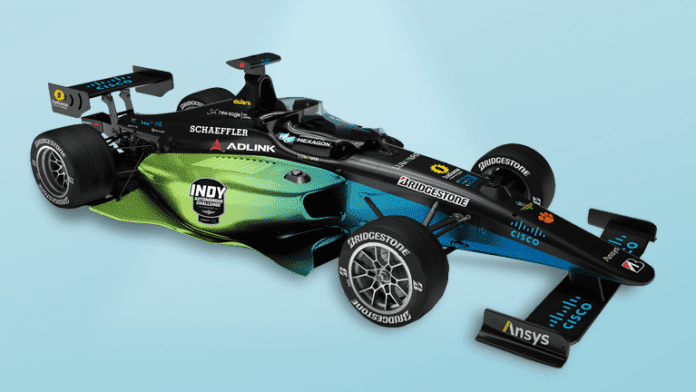Cisco is to provide car-to-trackside wireless connectivity at the first autonomous car race at the Indianapolis Motor Speedway next month. The firm has signed as a sponsor of the Indy Autonomous Challenge (IAC) on October 23, a new competition with teams from 21 universities and $1.5 million in prizes up for grabs. It is using its Fluidmesh-based technology, a proprietary 5G-like mesh system for critical communications.
The new IAC event is the first official race for autonomous vehicles at the track, which has been used as a proving ground for new tech in the automotive sector. The challenge for universities is to pit their autonomous vehicle solutions in a track race, with a view to drive innovation in the sector, including around vehicle safety and “all types of edge case scenarios”. The race teams will use a Dallara AV-21, designed for autonomous racing.
Cisco is the headline sponsor of the event; other tech partners include edge specialist ADLink, automotive sensor makers Hexagon and Luminar, Microsoft, mechatronics maker New Eagle, software firm Real-Time Innovations (RTI), and automotive and industrial supplier Schaeffler. Cisco is providing the networking kit for connectivity to and from the vehicles, covering race control commands, the offload of telemetry data, and GPS timing alignment.
Traffic will be carried over Cisco’s own Ultra-Reliable Wireless Backhaul system, which it acquired with the purchase of Fluidmesh Networks last year. Fluidmesh Networks has been integrated into Cisco’s IoT division. Cisco says the system “combines the reliability and speed of fiber with the flexibility of wireless”, and makes direct comparison with industrial-grade 5G. “It provides private mobile connectivity for mission critical applications,” it said.
Fluidmesh was founded in 2005 by a team of researchers from the Massachusetts Institute of Technology (MIT) and the Politecnico of Milan. It utilises unlicensed spectrum, and is geared for mission-critical comms in high-speed vehicles and trains, large-scale industrial sites, distributed infrastructures, and complex urban environments. Cisco said it is targeting autonomous vehicles, automated factories, and automated warehouses.
All IAC teams will use a Dallara AV-21 with hardware and controls provided by “IAC industry sponsors”, re-engineered and assembled by Clemson University (CU-ICAR) Deep Orange 12 students to enable automation, according to a statement from Cisco. “This allows the racecar to accommodate each team’s driverless algorithms, which will complete all actions normally performed by a human driver,” it said
“The teams are responsible for the autonomous driving software, which makes all driving decisions on board by collecting information from cameras, GPS inputs and sensors, including long-range LiDARs, which are the key sensors. Luminar’s LiDARs have high resolution, wide horizontal field of view, and dynamic scanning capabilities that allows the race cars to recognize other cars or debris both near and far.”
Cisco is also supplying its industrial switches, offering throughputs speeds of up to 40Gbps, to connect the various sensors. It noted its “5G-like” networking gear work for use cases like connected robots on a factory floor and autonomous haul trucks in mines, which “require data instantly and in mass, demanding a new type of networking that can support that data plus deliver the speed required for analysis”.
Bill Kohut, senior vice president of commercial sales for Cisco in the US, said: “The need for greater efficiencies and business resiliency is accelerating autonomous operations across industries… The IAC is an incredible opportunity for university students to further the fundamental research needed to make innovations like self-driving cars a reality, and we’re proud to see the progress they’ve already made.”

